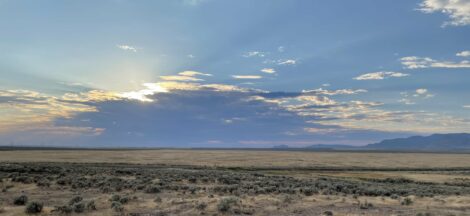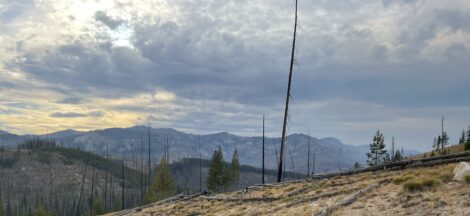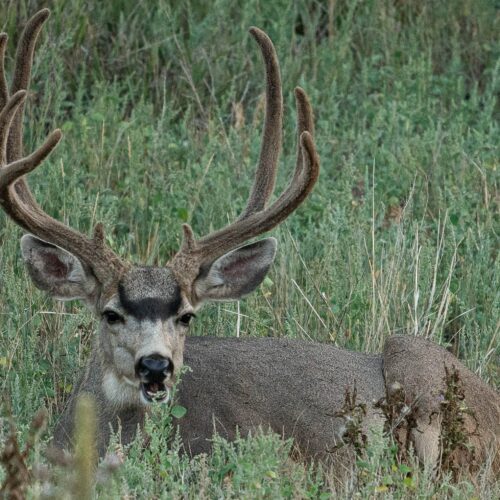Interpreting Deer Behavior and Predicting Their Actions?
As any seasoned hunter knows, being in tune with the natural world and understanding deer behavior is vital for a successful hunt. Let me tell you about the time when I first learned the true importance of reading deer behavior and predicting their actions.
It was a chilly autumn morning, with the sun just beginning to break through the fog. I had settled into my tree stand, perched high above the forest floor, sipping on a hot cup of coffee. With my trusty rifle by my side, I patiently waited for that perfect moment to present itself. Little did I know that this would be the hunt that would change my entire approach to deer hunting.
As the sun began to rise, I spotted a beautiful, mature buck slowly making its way through the underbrush. His muscular body gracefully navigated the dense foliage, his breath visible in the crisp morning air. I silently observed him, trying to predict his movements so I could position myself for the perfect shot. It was at this moment that I realized how crucial interpreting deer behavior truly was.
Understanding Deer Behavior: What’s Going On in Their World?
Deer are creatures of habit. They follow established routines, travel familiar paths, and adhere to specific patterns throughout the day. Understanding these patterns is the key to unlocking their world and anticipating their actions. Here are some common deer behaviors that every hunter should be aware of:
- Feeding: Deer are most active during dawn and dusk when they venture out to feed. Being able to identify preferred food sources, like acorns or agricultural crops, can help you predict where deer might be during these critical hours.
- Bedding: During the day, deer often retreat to thick cover to bed down and rest. Learning to identify bedding areas can provide valuable insight into deer movement and the best times to hunt.
- Travel Corridors: Deer frequently use well-established travel corridors between feeding and bedding areas. Identifying these corridors can help you intercept deer as they move throughout their habitat.
- Rutting Behavior: The rut, or deer breeding season, brings about a whole new set of behaviors. Bucks become more aggressive, searching for receptive does and defending their territory. Understanding the nuances of rutting behavior can give you an advantage during this exciting time of year.
Predicting Their Actions: How Can You Stay One Step Ahead?
Now that you have a basic understanding of deer behavior, the next step is learning how to predict their actions. There’s no foolproof method, but with experience and careful observation, you can increase your chances of success. Here are some tips for predicting deer movement:
- Study the Terrain: The lay of the land can have a significant impact on deer movement. Look for natural funnels, such as ridges or saddles, where deer are likely to travel. Also, take note of any obstacles like rivers or fences that might influence their path.
- Scout Early and Often: The more time you spend in the woods, the better you’ll understand your local deer population.
- Utilize Trail Cameras: Trail cameras can provide invaluable information about deer movement patterns. Strategically place cameras near feeding areas, travel corridors, and bedding locations to gather data and help predict when and where deer are likely to be.
- Observe Sign: Keep an eye out for deer sign, such as rubs, scrapes, and tracks. These clues can offer valuable insights into deer movement and help you determine the best locations to set up your stand.
- Consider Weather Conditions: Deer behavior can be influenced by weather patterns. For example, during periods of high winds or heavy rain, deer may be less active and stay closer to their bedding areas. Conversely, a sudden cold front can trigger increased movement, making it an ideal time to be in the woods.
- Pay Attention to the Moon: Some hunters believe that the moon phase can impact deer movement. While the debate is ongoing, it’s worth considering how the lunar cycle might influence your hunting strategy.
Personal Anecdotes: Lessons Learned from a Lifetime in the Woods
Over the years, I’ve had my fair share of unforgettable experiences and learned many valuable lessons while pursuing deer. Here are a few personal anecdotes that have shaped my understanding of deer behavior and how to predict their actions:
The Importance of Patience: I remember a particular hunt when I was just starting out. I had found a promising location near a well-used trail and set up my stand, eager to see some action. As the hours ticked by, I grew increasingly impatient, constantly shifting my position and scanning the woods. Eventually, I spotted a doe slipping silently through the trees. Excited, I hastily took aim and fired, only to watch her bound away unharmed. That day, I learned the value of patience and the importance of waiting for the perfect shot.
Adapting to the Unexpected: On another memorable hunt, I had everything planned down to the smallest detail. I had scouted the area extensively, identified key travel corridors, and even patterned the local bucks. However, Mother Nature had other plans. A sudden snowstorm blew in, transforming the landscape and disrupting deer movement. Instead of sticking to my rigid plan, I adapted by focusing on bedding areas and thick cover where deer were likely to take refuge from the harsh conditions. By staying flexible and adapting to the situation, I was able to harvest a nice buck that had sought shelter from the storm.
Learning from Failure: Sometimes, despite our best efforts, things don’t go as planned. I recall a hunt where I had missed a prime opportunity at a massive buck, thanks to a misjudgment in distance. Rather than dwelling on my mistake, I used it as a learning experience. From that day forward, I made sure to practice my range estimation skills and invested in a quality rangefinder, ensuring that I would never repeat that costly error.
Final Thoughts: The Lifelong Pursuit of Deer Hunting Mastery
Interpreting deer behavior and predicting their actions is a lifelong pursuit, with each hunt providing new opportunities for learning and growth. By studying deer habits, observing their environment, and applying the lessons we learn from both our successes and failures, we can become more proficient and effective hunters.
Remember, the woods are our classroom, and the deer are our teachers. With patience, persistence, and an open mind, we can continue to hone our skills and deepen our connection to these magnificent animals. So next time you find yourself perched in a tree stand, sipping on a hot cup of coffee, take a moment to appreciate the beauty and complexity of the world around you. Embrace the challenge of interpreting deer behavior and predicting their actions, and enjoy the lifelong journey that is deer hunting.
As you venture out into the woods, always remember to stay safe, respect the animals and their habitat, and cherish the memories and lessons learned along the way. Happy hunting!





 The Science Behind Deer Attractants and Effective Usage
The Science Behind Deer Attractants and Effective Usage